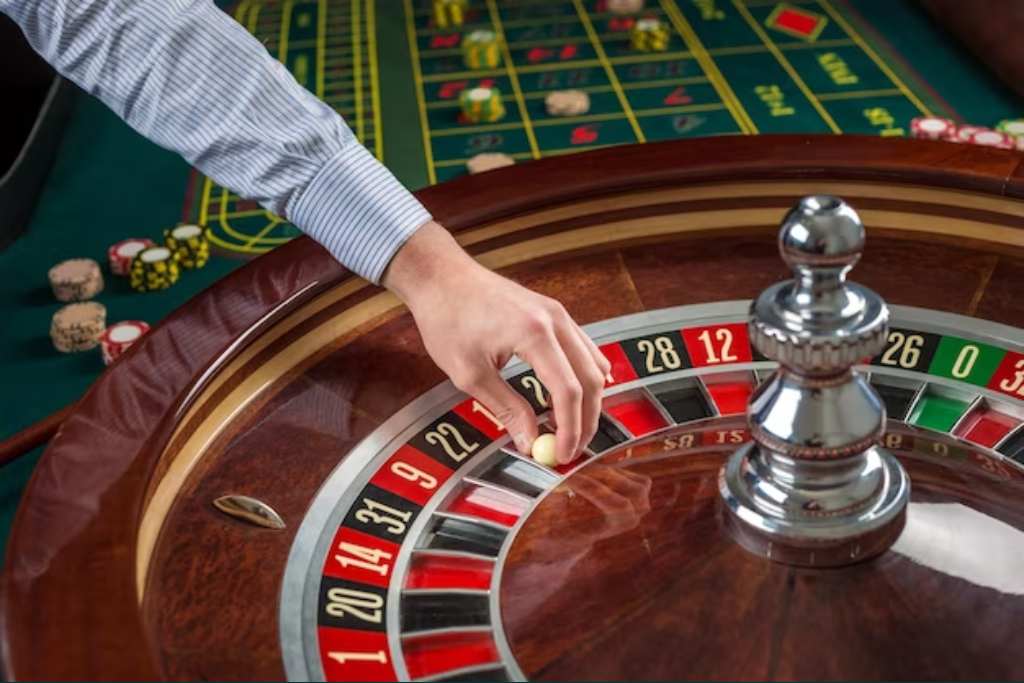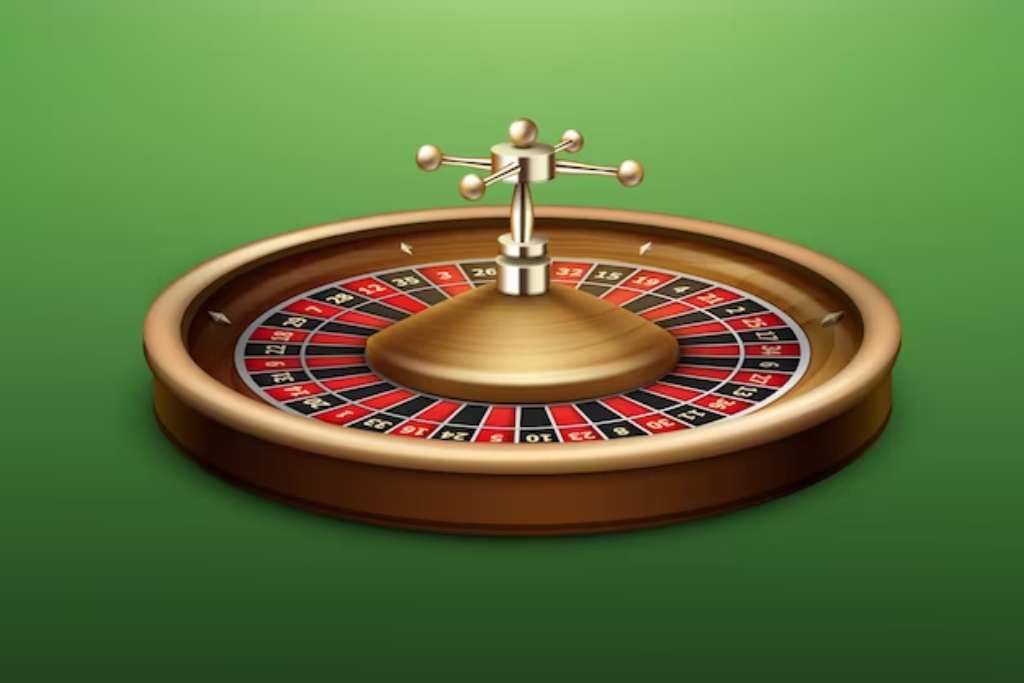Do you often find yourself enticed by the thrill of roulette but frustrated by its unpredictable outcome? Well, get ready to revolutionize your approach to this classic casino game because we’ve got a unique strategy that will turn the odds in your favor. Say goodbye to leaving everything up to chance and hello to long-term profits. Buckle up as we reveal the secrets behind a game-changing roulette strategy that will have you reeling in the wins like never before!
The appeal of roulette and its perceived unpredictability
Roulette has been a popular casino game for centuries, known for its fast-paced action and potential for big wins. Its simplicity and the thrill of watching the spinning wheel have attracted countless players to try their luck at the table.
One of the main reasons roulette is so popular is because of its perceived unpredictability. Unlike other casino games, such as blackjack or poker, where players can use strategies and skills to increase their chances of winning, roulette is often seen as a game purely based on luck. This belief adds an extra level of excitement to the game, as players never know what number or color will come up next.

The element of uncertainty in roulette makes it appealing not just to casual gamblers looking for entertainment but also to professional gamblers who are constantly searching for new ways to beat the odds and win big. This search for an edge over the house has led to many different strategies being developed over the years, each claiming to provide a way to consistently win at roulette.
However, most traditional strategies focus on short-term gains rather than long-term profits. They may help players win in a single session or even a few sessions, but they do not consider the overall odds and statistics that heavily favor the casino eventually.
That’s where this unique roulette strategy comes in—it tackles both short-term wins and long-term profitability by combining elements from traditional strategies with modern statistical analysis techniques.
How does roulette work, and what are the odds?
Roulette is a popular casino game that has been around for centuries. It is a game of chance where players place bets on either a single number, group of numbers, or color on a spinning wheel. The wheel is divided into numbered pockets ranging from 0 to 36 (or sometimes 00 in American roulette). A small ball is then spun around the edge of the wheel in the opposite direction, eventually coming to rest in one of the pockets, which determines the winning number.

Each player places their bets before the wheel is spun and once the ball has landed in a pocket, all winning bets are paid out by the dealer. The amount won depends on what type of bet was placed and how much was wagered. For example, betting on a single number (also known as a straight-up bet) offers higher payouts but also carries lower odds of winning compared to betting on red or black (known as even money bets).
One key aspect to understand about roulette is that it follows strict mathematical probabilities. This means that every spin of the wheel has an equal chance of landing on any particular number or color, regardless of previous outcomes. This principle is known as independent events.
In terms of odds, it’s important to note that there are two main types of roulette wheels: European (or French) and American. While both have similar gameplay, there are slight differences in their setups, which affect the odds.
The Traditional Strategies: A brief overview of common strategies like the Martingale and Labouchere
Roulette is an exciting and popular casino game that has been around for centuries. Over the years, players have developed various strategies in an attempt to beat the odds and come out on top. We’ll look in more detail at a few of the conventional roulette-playing strategies in this section.
The Martingale Strategy: The Martingale strategy is perhaps one of the most well-known and oldest betting systems in roulette. It originated in France in the 18th century and is based on the principle of doubling your bet after every loss until you win. The idea behind this strategy is that eventually, you will win back all your losses and make a profit.
For example, let’s say you start with a $10 bet on red, and it lands on black. With the Martingale strategy, you would double your bet to $20 on red for the next spin. If it lands on black again, you would double it to $40, and so on until, eventually, it lands on red, and you win back all your previous losses plus a $10 profit.
While this strategy may seem foolproof, there are a few downsides to consider. Firstly, it requires a large bankroll, which should keep increasing with each loss. Secondly, there is always a chance of losing several spins in a row, which can quickly deplete your funds.
The Labouchere Strategy: Another popular betting system that has been around for over 150 years
Introducing the Pivot Strategy: What it is and how it differs from traditional strategies
The pivot strategy is a unique and popular approach to playing roulette, known for its potential to generate long-term profits. Unlike traditional strategies, which often involve complex mathematical calculations or betting systems, the pivot strategy focuses on a simple yet effective concept: the “pivot” number.
So what exactly is a pivot number? In roulette, it refers to the number that appears more than once within a certain number of spins. The theory behind this strategy is that, due to the random nature of the game, some numbers are more likely to occur multiple times in a series of spins before others start repeating. By identifying and targeting these pivot numbers, players can potentially increase their chances of winning.

One of the key differences between the pivot strategy and traditional strategies is its reliance on patterns rather than specific numbers or colors. Many popular roulette strategies involve placing bets based on previous outcomes or perceived patterns, such as hot/cold numbers or red/black alternations. However, these approaches fail to consider one crucial factor: each spin in roulette is independent and does not affect future outcomes.
On the other hand, the pivot strategy acknowledges this randomness by focusing on finding repeat occurrences rather than trying to predict specific outcomes. This flexibility allows players room for adjustments as they play according to their observations.
Another key difference between this strategy and others is its simplicity. While many other strategies require players to memorize complex betting sequences or make significant changes to their betting patterns throughout a session, the Pivot Strategy only requires keeping track of one pivotal number per
How to Use the Pivot Strategy: Step-by-step instructions on implementing the strategy in a real game
The pivot strategy is an effective and unique approach to playing roulette that can lead to long-term profits. While it may seem like a daunting strategy at first, following these step-by-step instructions can help you implement the pivot strategy in a real game.
Understand the Basics of the Pivot Strategy: Before diving into how to use the pivot strategy, it’s important to have a good understanding of its core principles. The main concept behind this strategy is to identify a number on the roulette wheel that has not appeared for a long time (known as the “pivot” number) and bet on that number until it wins. This approach relies on probability and mathematics rather than luck or emotion.
Observe and Record Spins: To effectively use the pivot strategy, you will need to observe and record spins at your chosen roulette table. This means paying close attention to each spin of the wheel and taking note of which numbers are appearing frequently and which ones are rarely showing up.
Identify Your Pivot Number: Using your observations from step 2, you should be able to identify a pivot number—one that has not appeared for at least 35 spins. This could take some time depending on how fast or slow spins occur, so make sure to be patient and attentive during this stage.
Place Your Bets: Once you have identified your pivot number, it’s time to start placing bets. You will place all bets on this one number until
Analysis of Success Rates: Comparison of traditional strategies
It’s crucial to contrast a novel roulette strategy with traditional ones that players frequently employ to fully assess and comprehend its efficacy for long-term profits. This section will analyze and compare the success rates of both traditional strategies and the proposed unique strategy, providing insights into their strengths and weaknesses.

Firstly, let’s take a deeper look at some of the most common traditional roulette strategies, such as Martingale, Fibonacci, or Labouchere. These strategies are based on progressive betting systems, where players increase their bets after each loss in hopes of recovering previous losses and making a profit. While these strategies may provide short-term wins, they have several drawbacks that make them unsuitable for long-term profitability.
One major issue with traditional strategies is that they require significant initial bankrolls to sustain continuous betting patterns. For example, with the Martingale system, doubling your bet every time you lose requires deep pockets to ensure you don’t hit table limits before recouping any potential losses. In addition to this financial burden, these strategies also rely heavily on luck, as there is no guarantee that players will eventually recover their losses or make a profit.
On the other hand, the proposed unique roulette strategy takes a different approach by focusing on minimizing risks rather than chasing quick wins. This strategy combines careful game selection with disciplined betting techniques to maximize success rates over a longer period.
Want to know which online slots are the best? Read our in-depth guide, “What Is the Best Online Slot Game to Play?” to get tips and advice from experts on how to improve your game experience.

